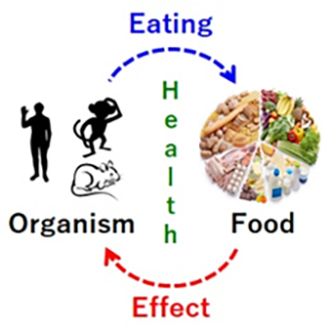|
|
| |
Topics of interests
|
Homeostatic reguation of nutritional preference
We are interested in elucidating the mechanisms that regulate eating behavior at sub-conscious level. Specifically, we are interested in "what we eat (eating-related decision making)", rather than "how much we eat (regulating of caloric intake)."
We focus on the homeostatic regulation of nutritional preference. In other words, we are interested in eating-related decision making based on the nutritional needs.
We recently elucidated a part of the mechanisms that regulates simple sugar preference(Matsui, Sasaki* et al., Nature Communications, 2018; Mori, ..., Sasaki*. Am J Physiol Endocrinology and Metabolism, 2025). We are currently working on identifying the mechnism that regulate preferences for fat and protein.
|
Neurocircuits that regulates food preference
We established a pharmacological model, in which food preference is reversibly altered in a nutrition-independent manner(Sasaki* et al., American Journal of Physiology, 2015). We are utilizing this unusual model for exploring the neurocircuits that regulate food preference at the whole brain scale.
|
| |
| Techniques you can lab in the lab
|
Neuroscience: stereotaxic surgery, virus vector production, histology
Endocrinology and Metabolism: concepts in hormone and multi-organ system
Molecular Biology; DNA, RNA, protein, cell cultue, signaling experiments
Genetics: how to use genetically modified mice
etc.
Tsutomu Sasaki, MD/PhD, Professor of Nutrition Chemistry
|
|
|



